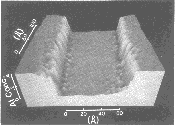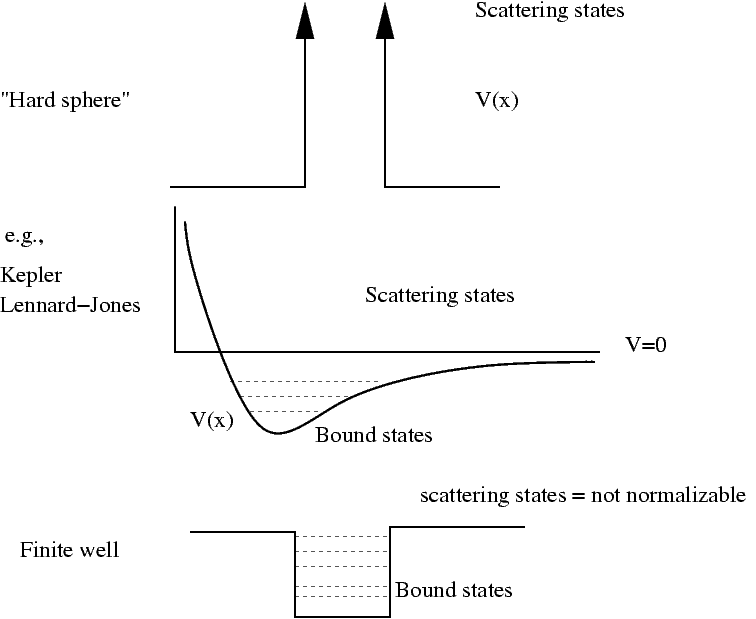Bound states, scattering states. Examples. The harmonic oscillator
From Physiki
| Course Wikis | > | Physics Course Wikis | > | Modern 2 |
small displacements from equilibrium
Consider "particles" connected by some attractive potential in equilibrium:

At equilibrium,  , so
, so
 to second order. This quadratic potential is called harmonic
becuase the restoring force is linear: hence the particle executes simple harmonic motion when slightly perturbed from equilibrium.
to second order. This quadratic potential is called harmonic
becuase the restoring force is linear: hence the particle executes simple harmonic motion when slightly perturbed from equilibrium.
some examples of potentials
 Figure 4.5 in the book. A sandwich composed of AlGaAs - GaAs - AlGaAs. The central GaAs section is 6 nm wide.
Figure 4.5 in the book. A sandwich composed of AlGaAs - GaAs - AlGaAs. The central GaAs section is 6 nm wide.
Regions that do not contain a well
- There are eigenfunctions for
 . These eigenfunctions, however, are plane waves and are not square integrable. They cannot represent a single particle, but can represent a constant flux of particles. We calculate transmission and reflection coefficients by comparing fluxes.
. These eigenfunctions, however, are plane waves and are not square integrable. They cannot represent a single particle, but can represent a constant flux of particles. We calculate transmission and reflection coefficients by comparing fluxes.
Regions that do contain a well
- There exists an eigenfunction for every
 . These eigenfunctions are not square integrable.
. These eigenfunctions are not square integrable.
- For
 eigenfunctions exist only for selected eigenvalues. For the finite square well potential we solve for these eigenvalues numerically.
eigenfunctions exist only for selected eigenvalues. For the finite square well potential we solve for these eigenvalues numerically.
